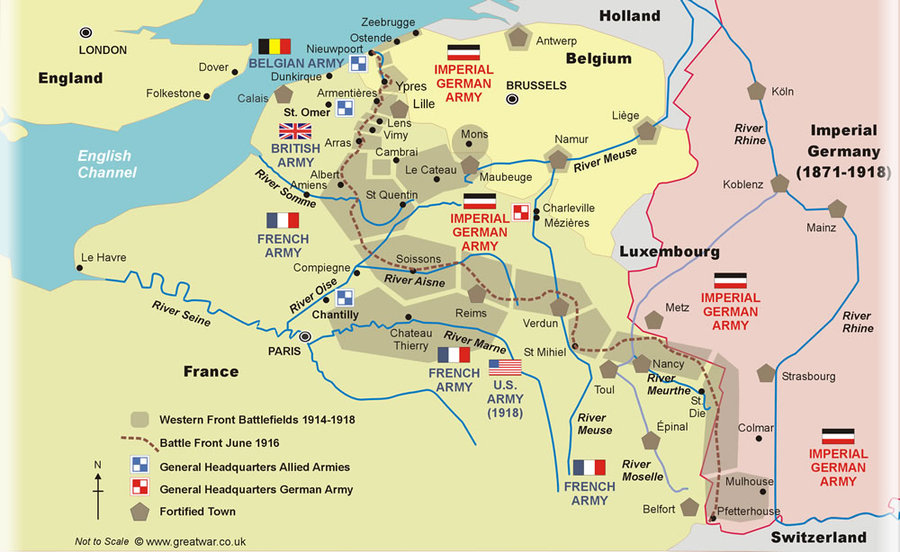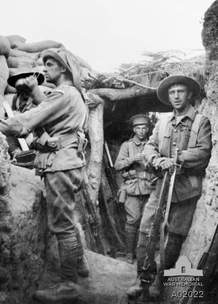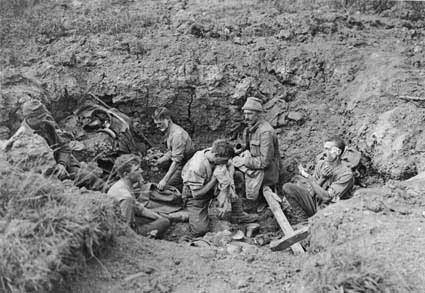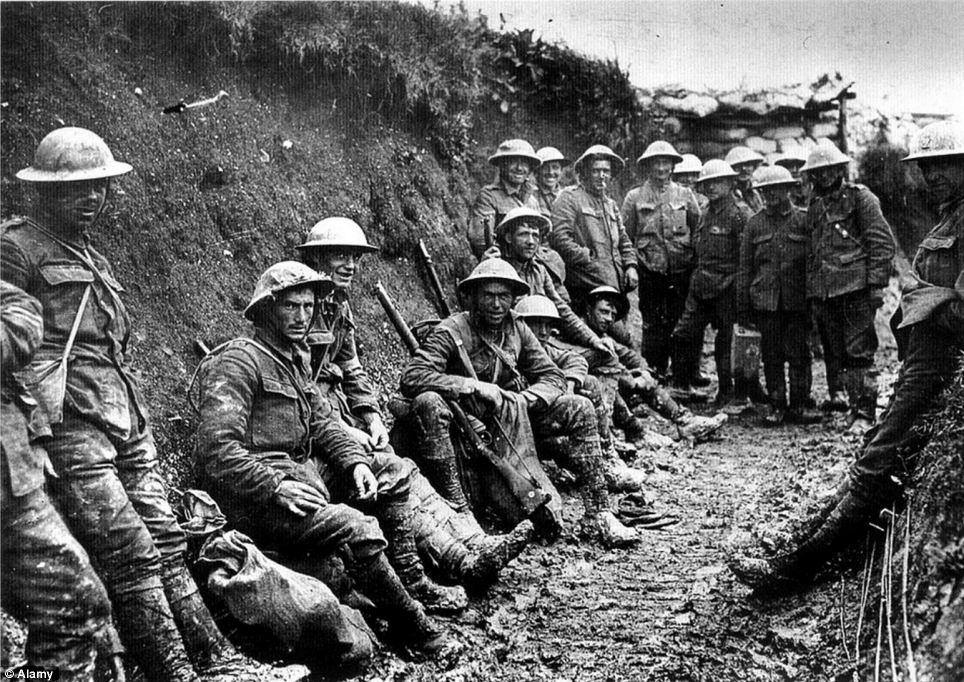At the outbreak of the First World War, Germany put into operation the Schlieffen Plan. This plan was based on the assumption that in case of a war breaking out, Germany would face a war on both her Western and Eastern borders. To prepare for this eventuality, German Chief of Staff, Count Alfred von Schlieffen, devised a strategy whereby Germany would attempt to defeat France before the latter’s ally, Russia, could mobilise her armies on Germany’s Eastern border. To bring about France’s rapid defeat, the German army planned to advance through neutral Belgium, bypassing the Franco- German border, and occupy Paris through northern France.
The Opening of the Western Front
 Map of the Western front 1914-1918 Source
Map of the Western front 1914-1918 Source
On 3 August 1914, the German army advanced through Luxembourg, and invaded Belgium, occupying Brussels, thereby opening what would become known as the Western Front, the main theatre of battle and where most of the war casualties took place. It stretched from the North Sea to the Swiss border along a 400 mile stretch through Belgium and France. The war on the Western front would last for four years, mostly in stalemate fashion, as each side failed to break through to the other. Armies on both sides held their positions by means of trench dugouts along the 400 long line. Neither side could outflank the other because of the North Sea at one end and the Alps on the other end, 400 miles away.
 The Long Line of the Trench Source
The Long Line of the Trench Source
After Britain declared war against Germany, the British Expeditionary Force(BEF) landed in Northern France and met the German army at Mons, succeeding in a temporary halt in the German advance. The BEF, however, was heavily outnumbered, and embarked on a fighting retreat to Le Cateau, suffering 7, 812 casualties. The BEF continued to retreat to the river Marne. In early September, the French rallied and halted the German advance at the bloody Battle of the Marne near Paris. By this time the German army was exhausted, and the BEF, backed up by the French, succeeded in driving the German army back over the river Marne. Both sides then began to dig in and the start of the trench war on the Western front began.
 Shell-holes often doubled up as trenches Source
Shell-holes often doubled up as trenches Source
Life in the Trenches
Possibly the most iconic images of horror and suffering during the First World War were soldiers’ experiences in the trenches. During winter, snow and heavy rain transformed the trenches into mud pools, often causing soldiers and animals to drown. Incessant shelling on the part of the enemy meant that the risk of being blown up was a constant danger. Many did die in this way which meant that those surviving shared the trench with dead rotting corpses. During the long hot summers the stench from rotting corpses became unbearable. This led to infestation by rats and the spread of diseases, such as typhus, cholera and dysentery.
 Troops in a trench in France during the First World War Source
Troops in a trench in France during the First World War Source
Heavy rains forced soldiers to remain standing in water, often waist-high, for long periods. Many developed a condition called “trench foot”, often leading to gangrene and as a consequence amputation of the foot. As a result of the constant shelling and fire from heavy artillery, soldiers lived with the ongoing terrifying sounds of deafening explosions. Many developed a condition that became known as shell shock, a term that originates from the First World War. Shell-shock manifested in the form of extreme paranoia, anxiety, paralysis, tremors, insomnia.
The death toll amongst the wounded was very high because antibiotics were not in use yet. A major cause of death among the wounded was infection and gangrene.
Battles on the Western Front
The most important battles on the Western Front, where most of the fighting and casualties occurred during the First World War, were the following:
- Battle of Mons 23 August 1914
- Battle of Le Cateau 26 August 1914
- Battle of the Marne 6 September 1914: The Germans are driven back at a cost of 13 000 British, 250 000 French and 250 000 German casualties.
- First Battle of Ypres (Belgium) October 1914.The German army launches an attack on Ypres in its attempt to capture the ports on the French coast that would enable military bombardment across the English Channel. They were successfully beaten back by a joint force of British and Indian armies.
- Battle of Neuve Chapelle, 10 – 13 March 1915: Both British and Germans suffered heavy casualties.
- Second Battle of Ypres 22 – 27 May April 1915: First use of poison gas by the German Army.
- Battle of Artois (French and Germans) and Battle of Loos (British and German): September 1915
- Battle of Verdun: February 1916 – December 1916: Between the French and German armies – over one million casualties
- Battle of the Somme – launched by the British on 1 July 1916 to relieve the French at Verdun. It lasted until November 1916, and resulted in 420 000 British, 200 000 French and nearly 500 000 German casualties.
- Third Battle of Ypres (Passchendaele) - July 1917 – November 1917: 325 000 British soldiers perished and 260 000 German casualties.
 The destroyed landscape of the Passchendaele battlefield Source
The destroyed landscape of the Passchendaele battlefield Source